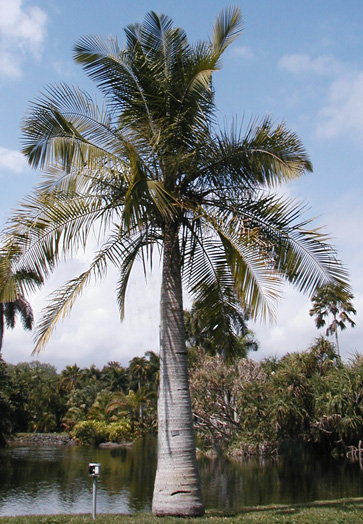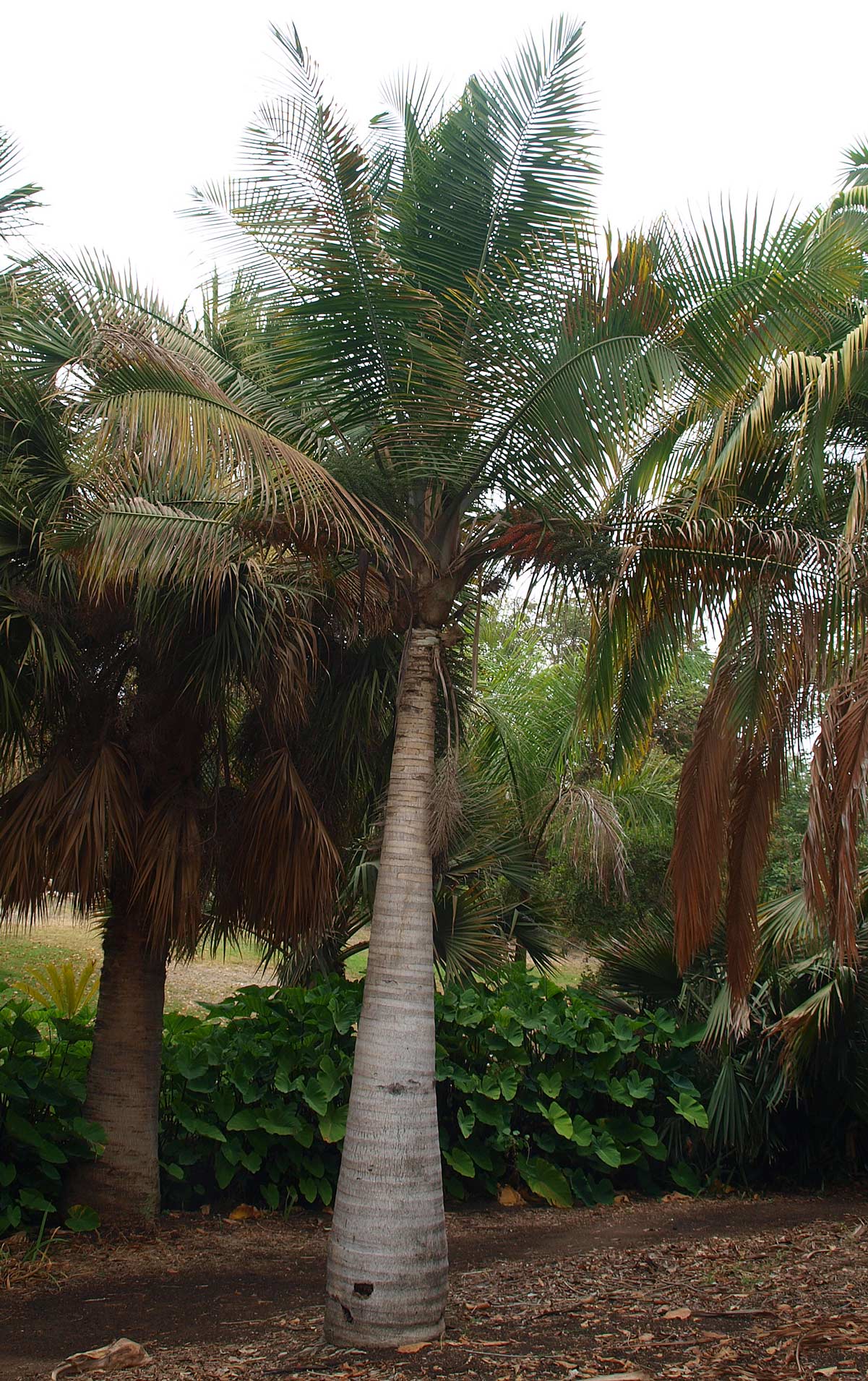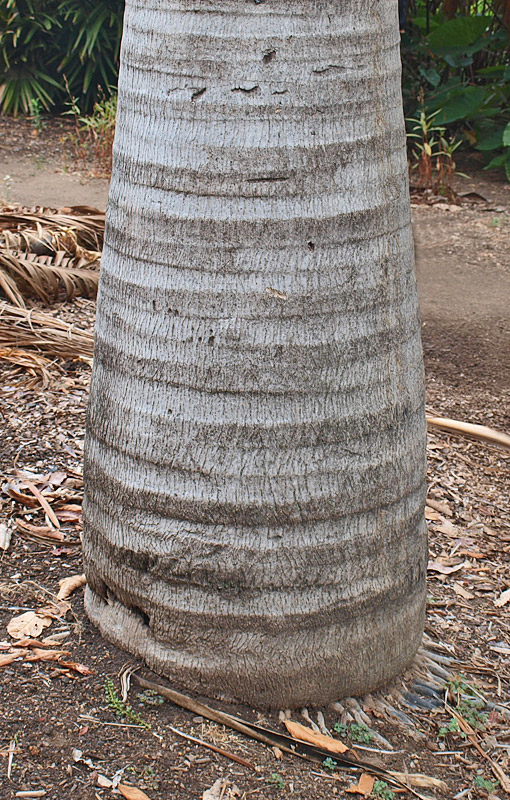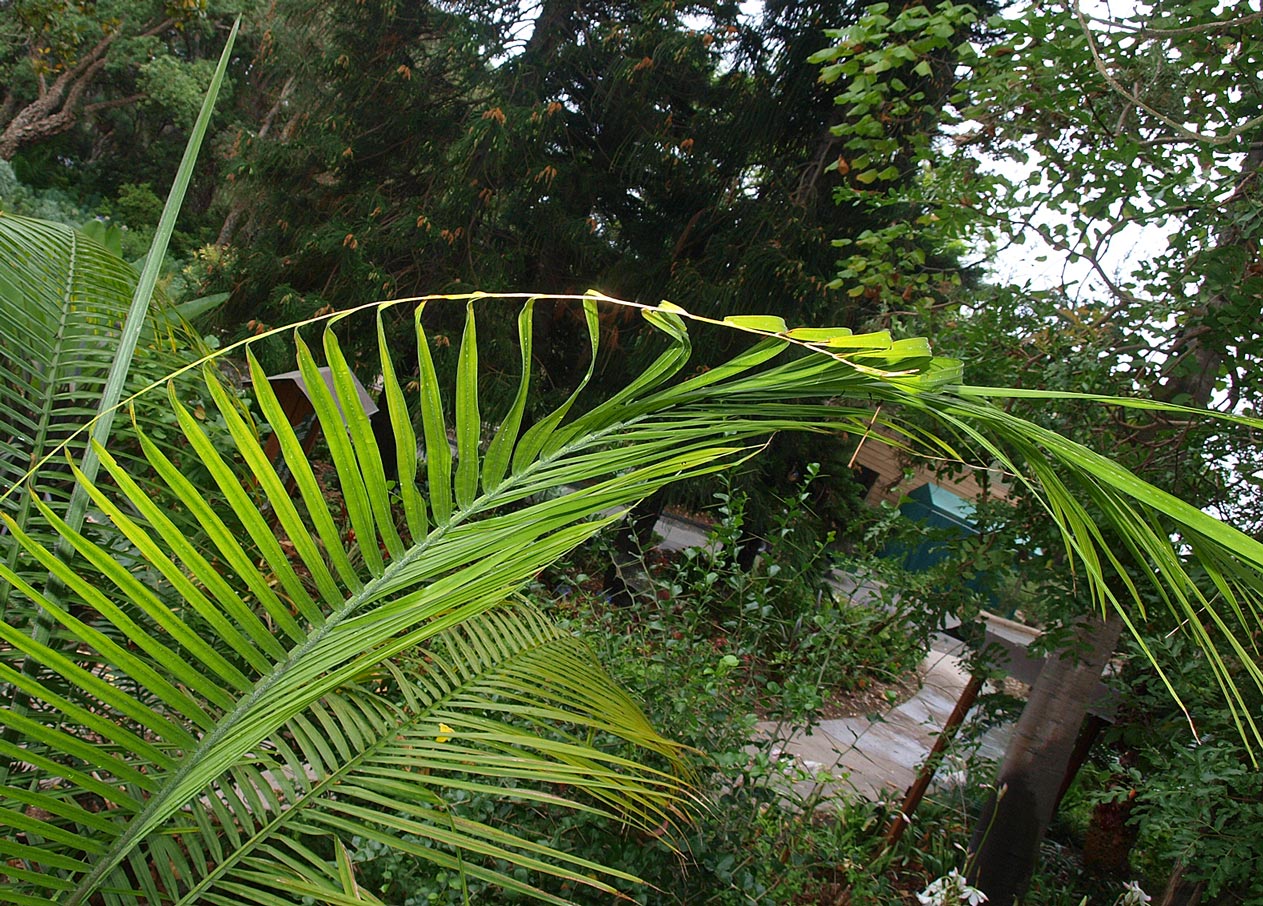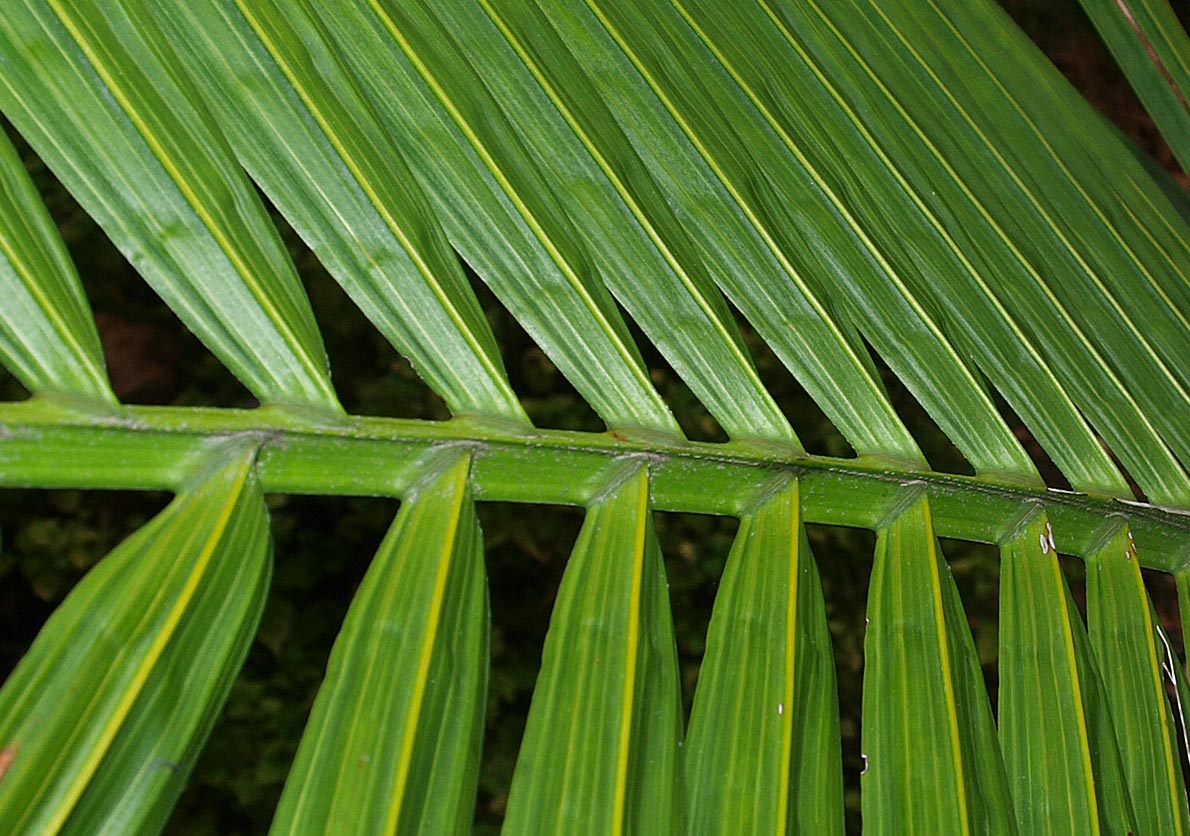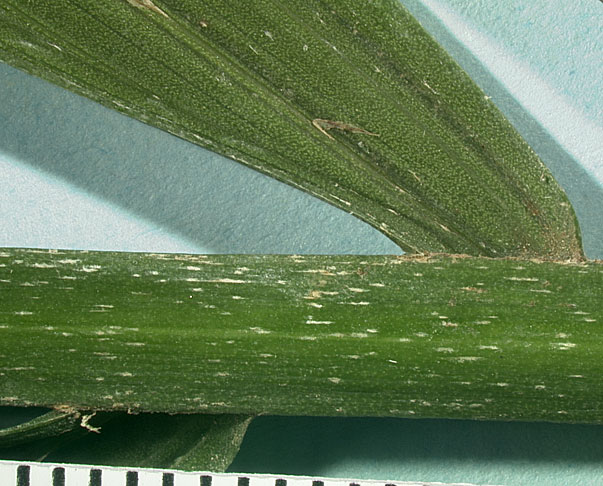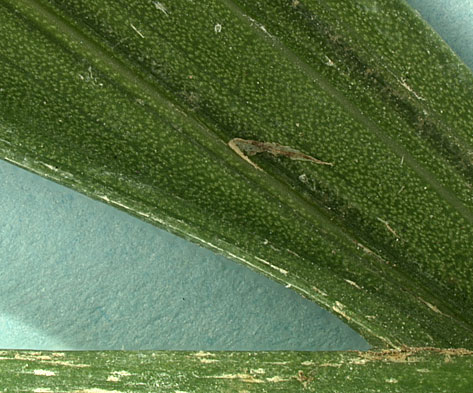Ravenea rivularis
|
Ravenea rivularis habit |
|
Ravenea rivularis habit of young plant |
|
Ravenea rivularis stem with leaf scars |
|
Ravenea rivularis new leaf with reins |
|
Ravenea rivularis new leaf rachis and leaflets |
|
Ravenea rivularis rachis and leaflet with tan ramenta (mm scale) |
|
Ravenea rivularis closer view of leaflet undersurface with tan ramenta (mm scale) |
|
Ravenea rivularis inflorescence.Photograph courtesy of Scott Zona. |
|
Ravenea rivularis inflorescence with developing fruit |
Common name
majesty palm
Description
Stems: Solitary, tapering, pale gray stems to 22 m tall and up to 35-50 cm in diameter, bulging at the base, with rings of leafleaf:
in palms -- the leaf blade (which is usually divided into leaflets or leaf segments), the petiole (or leaf stalk) and the sheath (which forms the attachment of the leaf to the stem)
scars 4-10 cm apart. Leaves: Pinnate, reduplicatereduplicate:
Most palm leaflets or leaf segments are obviously folded. If the folds create an upside-down V-shape, with the margins lower than the midrib (so that rain might "run off the roof"), the folding is reduplicate.
, 2-2.5 m long, with an arching rachisrachis:
an extension of the petiole through the blade of a pinnate leaf to which leaflets are attached
that twists near the tip and linearlinear:
term to describe leaves and leaflets that are narrow with nearly parallel margins; like a line
leaflets that are regularly arranged, growing in a single plane. Leaflets are green on both sides with a prominent midrib and obvious secondary veins. The midrib is clothed with a scattering of brown ramentaramenta:
irregularly shaped, thin scales, sometimes found along the abaxial midrib of a leaflet
on the underside. There are no spines or teeth. Flowers and fruits: Staminatestaminate:
a flower bearing stamens but no pistils; a “male” flower
and pistillatepistillate:
a flower bearing a pistil but no stamens; a “female” flower
flowers are borne on separate plants. The male inflorescenceinflorescence:
the reproductive structure of a flowering plant, including palms, consisting of flowers and associated bracts
is erect in bud, to 90 cm long, branched to two orders. The female inflorescenceinflorescence:
the reproductive structure of a flowering plant, including palms, consisting of flowers and associated bracts
is erect or spreading, to 1-1.5 m long, branched to one order. Both male and female flowers are white. The bright red, spherical fruits are 1-1.3 cm long.
Diagnostic features
Solitary, tapering, pale gray stems, bulging at the base, with prominent leafleaf:
in palms -- the leaf blade (which is usually divided into leaflets or leaf segments), the petiole (or leaf stalk) and the sheath (which forms the attachment of the leaf to the stem)
scars and no crown shaftcrown shaft:
a cylinder of clasping leaf sheaths toward the apex of the stem, found in some pinnate-leaved palms (e.g., <em>Wodyetia bifurcata</em>)
. Pinnatepinnate:
like a feather; palms with pinnate leaves usually have compound leaflets attached to a rachis, although a pinnate leaf may be entire with pinnate veins (e.g., <em>Chamaedorea metallica</em>)
leaves without spines or teeth; the leafleaf:
in palms -- the leaf blade (which is usually divided into leaflets or leaf segments), the petiole (or leaf stalk) and the sheath (which forms the attachment of the leaf to the stem)
sheath fringed with fibers, but not covered by a mass of fibers; leaflets roughly the same color above and below, with prominent midribs, secondary ribs, and scattered ramentaramenta:
irregularly shaped, thin scales, sometimes found along the abaxial midrib of a leaflet
below.
May be confused with
Heterospathe elata but its leaflets are irregularly arranged and new leaves emerge reddish-bronze in color.
Distribution
Native to south central Madagascar, growing along river banks
Additional comments
This species has been popular as an indoor ornamental palm.
Scientific name
Ravenea rivularis Jum. & Perr.
Family
Arecaceae/Palmae


